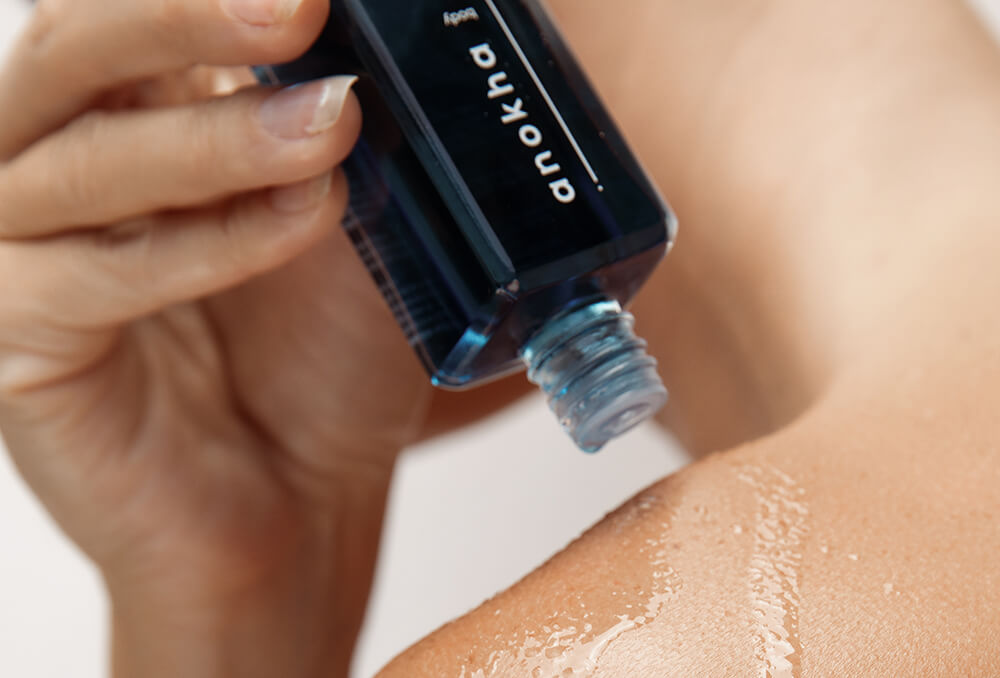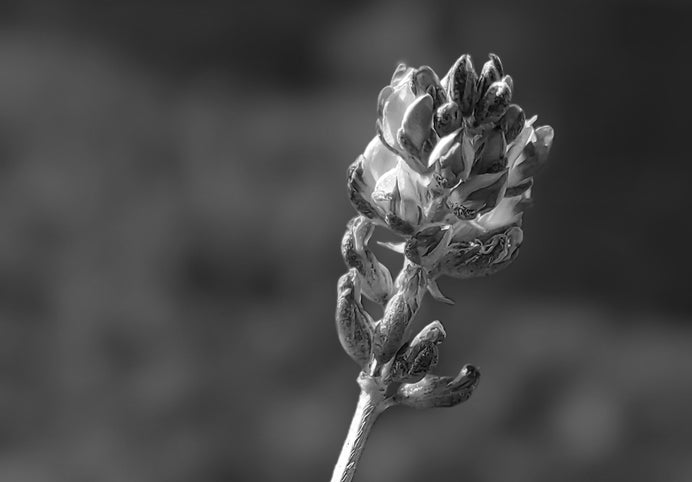
dry oils

the bottom line
You may have heard of “dry oils” – these aren’t oils which have been magically transformed into powders, but rather describe their characteristic of being quickly absorbed while leaving the skin unbelievably soft and gently hydrated. Heavier oils which leave a residue on the skin, in contrast, are referred to as “wet oils”. join us as we explore the enchanting world of oils and discuss when it’s better to go dry.
first layer: the wet and the dry
As discussed, the terms “dry” and “wet”, when used in reference to oils, describe how quickly the oils are absorbed into the skin, rather than their texture or consistency. Massage oils, for example, are intended to leave a layer on the skin and reduce friction. Classified as wet oils, these will feel heavier on the skin. However, wet oils do have some benefits – because they penetrate the dermal layer of the skin more slowly, they can help to relieve chronically dry skin and inflammation. Some examples of wet oils include coconut, castor, sweet almond, hemp seed, apricot kernel, and marula.
second layer: the science of oils
Let’s return briefly to the structure of skin. The skin is made up of three layers – epidermis, dermis, and subcutaneous tissue or hypodermis. The epidermis itself has its own layers, from superficial to deep: stratum corneum, stratum lucidum, stratum granulosum, stratum spinosum, stratum basale. Think of the stratum corneum as a brick wall with cells held together by a lipid mortar, thereby creating an outer barrier. An intact stratum corneum helps to defend against dehydration and bacteria, which protecting the deeper layers of cells. The stratum corneum is continuously shedding old cells as new ones are created. When the skin barrier is disrupted, hydration decreases and transepidermal water loss (TEWL) increases.
Carrier oils, also known as fixed or base oils, are able to “carry” essential oils used in much smaller quantities. Carrier oils contain a number of essential fatty acids, which include linoleic acid, linolenic acid, myristic acid, oleic acid, palmitic acid, and stearic acid. A deficiency in essential fatty acids can be associated with dry skin secondary to loss of moisture; carrier oils high in essential fatty acids can therefore benefit very dry and flaky skin. Most dry oils contain linoleic acid, or omega-6. Linoleic acid is lightweight and is absorbed more easily by the skin than oleic acid (omega-9), which is thicker and tends to sit on the skin. Examples of dry oils which relatively high levels of linoleic acid include borage, rosehip seed (44% linoleic), squalane, evening primrose (72% linoleic), grapeseed, and safflower. Oils higher in oleic acid, such as almond, jojoba, soybean, and avocado, tend to create an occlusive layer which traps moisture beneath it. Nonetheless, studies have demonstrated that linoleic acid helps to maintain the integrity of the skin barrier, while oleic acid can disrupt it with continued use.
Given all of this, we can make some general recommendations about which oils to use for different skin types. For oily or acne-prone skin, oils high linoleic acid such as rosehip, evening primrose, safflower, and hemp seed are ideal. Very dry and mature skin types will benefit from oils higher in oleic acid, including sunflower, argan, sea buckthorn, and marula. Combination skin tends to enjoy oils with a more balanced mix of linoleic and oleic acids – argan, baobab, and tamanu oils.
third layer: the benefits of dry oils
As we’ve discussed, dry oils have some particularly special effects:
- lightweight moisture: the linoleic acid of dry oils has been shown to effectively moisturize skin by helping to maintain its barrier function.
- antioxidants: dry oils host a number of potent antioxidants, which help to fight free radicals and protect the skin from the damaging effects of ultraviolet rays, pollution, and injury.
- skin barrier support: as noted, dry oils contain fatty acids, such as linoleic acid, which have been demonstrated to help maintain the skin barrier.
- decrease inflammation: the metabolism of polyunsaturated fatty acids, such as linoleic acid, has been shown to generate anti-inflammatory metabolites.
fourth layer: how we do it
Oils can be particularly nourishing for our skin. We especially love using dry oils on damp skin after bathing. These can often be sprayed or sprinkled directly in place of a body lotion or cream, and then gently massaged in until absorbed. On the face, warm up a few drops of oil in your hands prior to pressing onto your skin. This should be the final stage in your routine, as water-based products will not penetrate this occlusive layer. Finally, you can also use a few drops on the ends of dry hair to smooth and soften.
Our blue lotus body oil is composed of elegant and effective dry oils from around the world, including plant-based squalane, kukui nut oil from Hawaii, and papaya seed oil from Turkey. We’ve included yuzu essential oil from Japan and blue yarrow essential oil from Bulgaria for a scent and color which are mesmerizing and clean.
All this and more at https://www.anokhaskincare.com .
xx
anokha
references:
- https://www.healthline.com/health/dry-oil#other-benefits
- https://www.mindbodygreen.com/articles/what-is-dry-oil
- https://www.dermstore.com/blog/top_ten/what-is-dry-oil/
- https://lunanectar.com/blogs/chronicles/the-truth-about-facial-oils-for-your-skin-type
- https://www.formulabotanica.com
- Lin TK, Zhong L, Santiago JL. Anti-inflammatory and skin barrier repair effects of topical application of some plant oils. Int J Mol Sci 2017; 19(1): 70-91.
- Ziboh VA, Miller CC, Cho Y. Metabolism of polyunsaturated fatty acids by skin epidermal enzymes: generation of antiinflamatory and antiproliferative metabolites. Am J Clin Nutr 2000; 71(1): 361s-366s.



leave us a comment
This site is protected by hCaptcha and the hCaptcha Privacy Policy and Terms of Service apply.